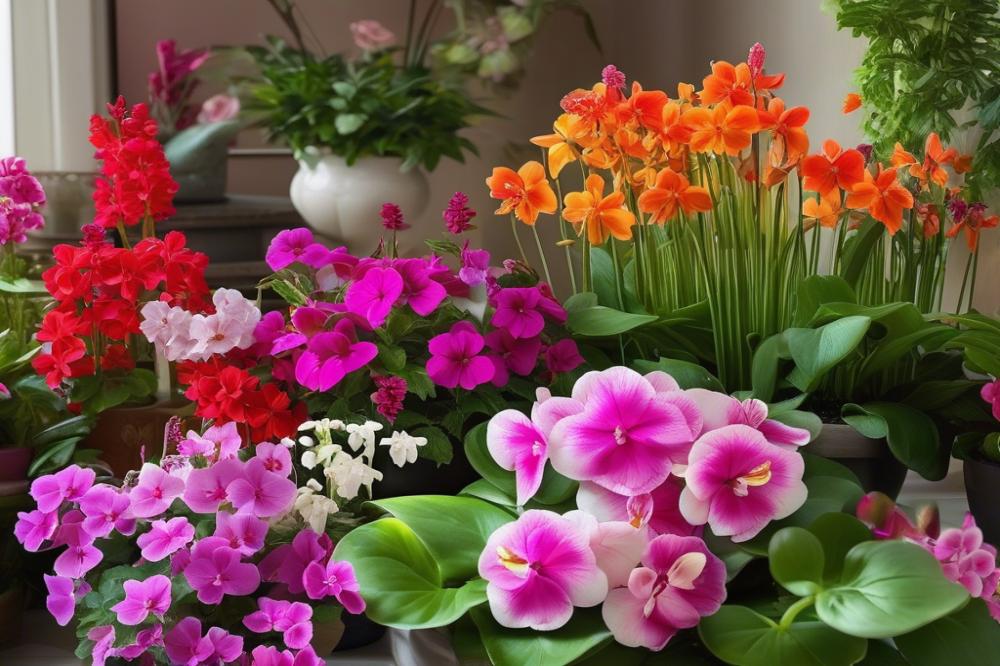How to Choose the Right Roses for Your Climate
Choosing the right rose varieties is vital for anyone interested in successful rose gardening. This process can define the health and beauty of your flowers. Not every rose suits every environment. Depending on your garden zones, the choice becomes more critical for effective growth and blooming.
Different factors influence how well a rose thrives in a particular area. Climate plays a huge role in determining the proper type. Some varieties flourish in cooler temperatures, while others need warm sunshine to thrive. For instance, cold hardy Roses are ideal for gardens in chillier regions. Conversely, heat tolerant roses work best in warm climates, enduring the fierce summer sun.
Soil requirements also become significant when expanding your knowledge. Each variety has preferences that affect how well they establish roots. Proper care, including watering and fertilization, depends on these conditions. Additionally, certain varieties resist diseases better than others, giving you less to worry about in the long run. Ultimately, understanding the interplay of these factors leads to a more fruitful endeavor in growing roses. Selecting the right types not only enhances your garden’s beauty but also simplifies the task of planting roses.
Understanding Your Climate

Before selecting the ideal flowers for your garden, it’s essential to understand the concept of garden zones. These zones categorize regions based on their climatic conditions. Knowing your zone matters because it helps predict which plant varieties will thrive in your area.
Temperature ranges play a crucial role in the selection process. Different types of roses have distinct tolerances for cold and heat. For instance, some can withstand freezing winters while others prefer warm summers. Gardeners should focus on cold hardy roses if they live in regions with harsh winters. On the other hand, heat tolerant roses are better suited for areas with high temperatures.
Local weather patterns significantly influence plant health. Frequent rain, droughts, or humidity can all affect growth. Recognizing these patterns can guide your choices, meaning you’ll pick plants that will flourish in your specific conditions. When growing roses, take into account how much sun or shade your garden receives throughout the day.
Disease resistance is another factor to remember. Certain rose varieties are bred to resist common diseases. Selecting disease resistant roses saves time and effort in rose care. It’s wise to research which types work best in your area.
Soil requirements also vary based on location. The quality and type of soil can affect nutrient availability for your flowers. Therefore, it’s important to test your soil if you’re considering planting roses. Rich, well-drained soil often yields the best results.
Each of these elements contributes to the broader task of rose gardening. An informed gardener is typically more successful. The right choices often lead to a beautiful and healthy garden.
Choosing the Right Rose Varieties

When it comes to selecting rose varieties, understanding the different types available is crucial. Gardeners face various challenges based on their local climate. Knowing the characteristics of each variety can help in making the best choice for your garden. For colder areas, consider cold hardy roses. These are designed to thrive even when temperatures drop. They typically survive in USDA garden zones 3 and 4, giving you vibrant blooms when many other plants lie dormant.
Characteristics of Cold Hardy Roses for Colder Climates
Cold hardy roses exhibit resilience unlike any other. Many are bred specifically for frigid environments. They possess thicker cell walls that resist freezing and thawing. Additionally, some varieties have stronger roots, enabling them to withstand harsh winters. Look for options like the Explorer series, which features deep colors and robust growth. Selecting these varieties allows for successful planting even in extreme conditions. This choice leads to fewer worries about winter kill and damage. With proper rose care, you can create a stunning landscape despite chilly temperatures.
Benefits of Heat Tolerant Roses for Warmer Regions
On the flip side, heat tolerant roses are essential for warmer climates. In regions with high temperatures, these varieties maintain their beauty without wilting away. They thrive under intense sunlight, making them ideal for hotter areas. Many heat tolerant options can withstand drought conditions. This means less frequent watering is necessary, which is a blessing during summer’s peak. Investing in these hardy varieties not only brightens your garden but also reduces maintenance efforts. Choosing wisely creates an oasis even under the sun’s relentless rays.
Importance of Disease Resistant Roses in Maintaining Plant Health
While climate considerations are vital, another key factor is disease resistance. Growing roses can sometimes be challenging due to various pests and diseases. Opting for disease resistant roses minimizes the risks associated with these threats. Varieties such as Knock Out roses are known for their ability to resist common ailments like black spot. They require less attention and effort for rose gardening. With healthier plants, your garden will not only flower but flourish. Making smart choices now leads to a vibrant and joyful garden for years to come.
Soil Requirements for Growing Roses

Many plants thrive in specific soil conditions. Ideal soil for roses is well-drained, loamy, and rich in organic matter. Good drainage prevents water from pooling, which can lead to root rot. On the other hand, compacted soil or heavy clay can hinder growth and harm roots.
Soil pH plays a vital role in rose care. Ideally, the pH should be between 6.0 and 6.8. This range promotes nutrient availability, allowing roses to absorb what they need. Testing your soil is a must. You can buy a simple test kit or send a sample to a lab for analysis.
Also, consider the value of enriching your soil. Compost is a great addition and improves both drainage and nutrient content. Adding well-rotted manure or specific fertilizers designed for flower growth can significantly enhance your garden’s soil. Many gardeners use a mix of organic materials to create a nutrient-rich environment.
When planting roses, it is essential to prepare the ground ahead of time. Digging a wide hole, mixed with organic matter, supports healthy root systems. Choose disease-resistant roses to boost your chances of having a thriving garden. Depending on your garden zones, some varieties may adapt better than others.
For colder climates, cold hardy roses will survive the winter. Warm regions may benefit from heat tolerant roses that withstand high temperatures. Each rose variety has specific needs, so keep that in mind during selection. Always research to ensure your choices fit your area’s climate.
Investing time in understanding soil requirements will pay off in the long run. Healthy soil creates a strong foundation for your garden. Planting roses without the right conditions can lead to disappointment, while the right preparation can yield beautiful blooms.
Planting Roses in Your Garden

When planting roses, it’s essential to consider your climate. Different rose varieties thrive in various conditions. For colder regions, cold hardy options are a must. These types can withstand frost and snow. In warmer areas, heat tolerant roses will flourish and bring color to your space.
Best Practices for Planting According to Climate
Start by reviewing the specific needs of each rose type. Soil requirements play a critical role in their development. Sandy, well-drained soil is often ideal, while clay can hold too much water. Amend the ground with organic matter to improve quality. Watering before planting is crucial; well-hydrated roots grow better. Choose a spot that offers adequate sunlight, aiming for at least six hours a day.
Tips for Spacing and Placement in Your Garden Layout
Appropriate spacing is key for healthy rose care. Position plants at least two feet apart to prevent overcrowding. Air circulation between them helps reduce disease risk. Consider the height of each variety when making decisions about placement. Taller strains should go towards the back of flower beds, while shorter options can fill in the front. Taking time to visualize your layout will create stunning displays.
Timing of Planting for Optimal Growth
Timing is vital for successful rose gardening. Spring is typically the best season to plant. The ground warms up, allowing roots to establish. In some areas, fall planting may also work, as long as the temperatures are mild. Knowing your local garden zones can guide you in making the right choice. Make sure to prepare ahead of time to get your garden ready.
Care and Maintenance of Roses
Growing roses can be rewarding, but they require specific care based on your climate. Understanding how to maintain them in various environments can mean the difference between a vibrant garden and one that struggles. Here are some essential tips for effective rose care across different garden zones.
Essential Rose Care Tips Based on Climate
For cold regions, selecting cold hardy roses is essential. These plants can survive frigid temperatures while blooming beautifully. In hot climates, you should look for heat tolerant roses, which thrive in higher temperatures while needing less water. Always consider your local weather patterns when choosing rose varieties.
Fertilization and Watering Practices for Different Environments
Watering practices depend greatly on your climate. In dry regions, regular deep watering is crucial. It encourages strong root growth. In areas with higher humidity, be careful not to overwater. Root rot can become a significant issue. Fertilization should also align with your environmental conditions. Use a balanced fertilizer in spring for best results. For those with nutrient-poor soil, consider organic options for added benefits. Remember to monitor soil requirements closely.
Identifying and Managing Common Diseases and Pests
Pests and diseases can threaten the health of your plants. In warmer climates, aphids or spider mites may cause problems. Regular inspections help catch these issues early. For colder regions, fungi can be a concern. Disease resistant roses are great choices to minimize these risks. If you notice discoloration on the leaves, act quickly. Proper care can help keep your garden healthy.
Taking care of roses involves more than just watering and fertilizing. Pay attention to their overall well-being. Regular pruning promotes growth and reduces disease risks. Always remove dead or diseased leaves to keep your garden thriving. Engage with your plants every day to ensure they stay healthy.
Final Thoughts on Choosing the Right Roses
Selecting the ideal roses for your climate is essential for a thriving garden. When you choose varieties that suit your environment, you set the stage for success. Healthy plants are more resilient to pests and diseases, which means less work for you in the long run. It’s clear that understanding your local weather conditions plays a pivotal role in your gardening journey.
Do not hesitate to experiment with different rose varieties. Trying out new types can lead to delightful surprises. Some may thrive better than others in your specific setting, and that’s part of the fun. Also, adjusting care practices based on what you observe will enhance your skills. Watching how your plants respond fosters a deeper connection to gardening.
Ultimately, rose gardening can bring immense joy when you’re working in blissful conditions. The smell of blooms and the sight of vibrant colors can brighten any day. Celebrating your achievements, whether small or large, can foster a sense of fulfillment. With the right choices, every garden can become a personal paradise.



